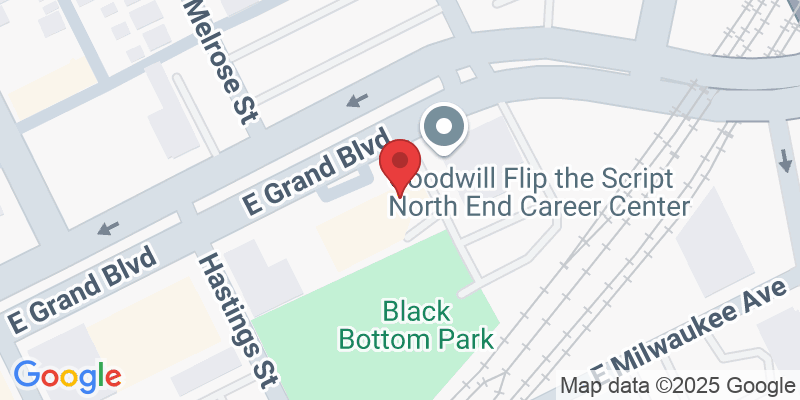
We have the tools and resources to help you start or
scale your business. Join our thriving community and
stay connected with us.

We have the tools and resources to
help you start or scale your business.
Join our thriving community and stay
connectedwith us.


Being an entrepreneur is hard, and having the proper resources can be frustrating. You do not have to go at it alone. We have courses and a community to help educate you (Real Life XP), a full CRM system to help you automate your processes (The Real Life Business Builder), and coaching to help you implement what you've learned.


Being an entrepreneur is hard, and having
the proper resources can be frustrating.
You do not have to go at it alone. We have courses and a community to help educate
you (Real Life XP), a full CRM system to help
you automate your processes (The Real
Life Business Builder), and coaching to help
you implement what you've learned.

We understand that minority entrepreneurs have different needs and we cater to those.
Real Life XP
Our flagship entrepreneur accelration course
covers the entreprenur mindset, developing
systems and processes for your business,
building credit and acquiring funding for your
business and much more.


Coaching and Consulting
The right guidance can help entrepreneurs
overcome obstacles or avoid them all together.
We offer one-on-one and group coaching
to guide entrepreneurs through the maze of
business building.
The Real Life Business Builder Community
Our free community for entrepreneurs offers
courses, eBooks, group coaching,
and other resources for the growth and
development of entrepreneurs.


The Real Life Business Builder
The Real Life Business Builder is a full CRM, marketing, and automation system that we help set up for our clients to ensure implementation. Our lowest plan is just $80 a month and includes a free website and basic automation set up.
Tax Preparation, Training,
and Software
Small businesses need tax preparers who
understand small businesses. We now offer tax preparation services, tax preparation training,
and tax software to ensure entrepreneurs are able to plan for taxes and receive maximum returns.


Business Credit and
Business Funding
Without capital, your business will not be able to grow. We help clients start from nothing and build business credit in less than 90 days. We also ensure that you fit the criteria to apply for different business funding options.
The Ultimate Business
Builder Blueprint
Let us help you create an irresistible offer,
a professional funnel to generate leads,
marketing and ads to increase your reach,
CRM software to manage leads, and coaching
to put it all together.


We understand that minority
entrepreneurs have different needs
and we cater to those.

Real Life XP
Our flagship entrepreneur accelration course covers the entreprenur mindset, developing systems and processes
for your business, building credit and acquiring funding for your business and much more.

Coaching and Consulting
The right guidance can help entrepreneurs
overcome obstacles or avoid them all together. We offer one-on-one and group coaching to guide entrepreneurs through the maze of business building.

The Real Life Business
Builder Community
Our free community for entrepreneurs offers courses, eBooks, group coaching,
and other resources for the growth and
development of entrepreneurs.

The Real Life Business Builder
The Real Life Business Builder is a full CRM, marketing, and automation system that we help set up for our clients to ensure implementation. Our lowest plan is just $80 a month and includes a free website and basic automation set up.

Tax Preparation, Training,
and Software
Small businesses need tax preparers who
understand small businesses. We now offer tax preparation services, tax preparation training,
and tax software to ensure entrepreneurs are able to plan for taxes and receive maximum returns.

Business Credit and
Business Funding
Without capital, your business will not be able to grow. We help clients start from nothing and build business credit in less than 90 days. We also ensure that you fit the criteria to apply for different business funding options.

The Ultimate Business
Builder Blueprint
Let us help you create an irresistible offer,
a professional funnel to generate leads,
marketing and ads to increase your reach,
CRM software to manage leads, and coaching
to put it all together.



How to Build Systems That Make Your Business Work Without You
How to Build Systems That Make Your Business Work Without You
Most entrepreneurs start their businesses with dreams of freedom, flexibility, and financial independence. Yet the reality for many business owners looks quite different: long hours, constant stress, and the inability to step away without everything falling apart.
According to a recent survey, over 70% of small business owners work more than 40 hours per week, and many find themselves perpetually tethered to their phones and email, unable to truly disconnect even for short periods. This isn't just exhausting it's also a significant barrier to growth and scalability.
The good news? It doesn't have to be this way. By implementing the right systems and processes, you can transform your business from one that demands your constant attention into one that operates smoothly even when you're not around.
In this comprehensive guide, I'll walk you through exactly how to build these systems, step by step. Whether you're looking to take more vacations, focus on strategic growth, or eventually sell your business for a premium, creating a self-running enterprise is the key to achieving your goals.
Why Your Business Needs Systems
Before diving into the how, let's clarify the why. A systematized business offers numerous advantages:
1. Freedom and Flexibility
When your business can operate without your daily involvement, you gain the freedom to choose how to spend your time. Take vacations without anxiety, pursue other projects, or simply enjoy life beyond work.
2. Scalability
Systems allow your business to grow beyond the limitations of your personal capacity. As Jean Moncrieff puts it, "Removing yourself from the day-to-day running of your business is one of the best things you can ever do... It will allow you to make a life as an entrepreneur, not just a living."
3. Increased Business Value
If you ever decide to sell your business, buyers will pay a premium for operations that don't depend on the owner. A business that runs itself is inherently more valuable than one that collapses without its founder.
4. Better Customer Experience
Well-designed systems ensure consistency in product quality and service delivery, leading to better customer experiences regardless of who is handling the interaction.
5. Reduced Stress
When you're no longer putting out fires and managing every detail, your stress levels decrease dramatically, improving both your mental health and decision-making abilities.
The 7-Step System to Create a Self-Running Business
Let's break down the process of building systems into manageable steps:
Step 1: Document Everything You Do
The first step toward creating a self-running business is getting everything out of your head and onto paper (or digital documentation).
Action Plan:
Track your activities: For two weeks, document every task you perform in your business, no matter how small or routine it seems.
Create standard operating procedures (SOPs): Turn these activities into step-by-step instructions that anyone could follow.
Use templates and checklists: Develop templates for recurring tasks to ensure consistency and completeness.
Leverage technology: Use platforms like Google Docs, Notion, or dedicated SOP software to organize and share your documentation.
As the founder of Predictable Profits notes, "Think of your business as a piece of flat-pack furniture. It's just a jumble of parts without an instruction manual. But record all the important processes in standard operating procedures and anyone can run your business it's as simple as following the manual."
Step 2: Identify and Prioritize Key Business Processes
Not all processes are equally important. Focus first on systematizing the activities that:
Are performed frequently
Directly impact customer experience
Generate revenue
Consume significant time or resources
Require your personal involvement currently
Action Plan:
Create a process inventory: List all the major processes in your business (marketing, sales, fulfillment, customer service, etc.).
Rank processes by impact: Identify which processes are most critical to business operations.
Map current workflows: Create visual representations of how work currently flows through your business, identifying bottlenecks and inefficiencies.
Redesign for efficiency: Before automating anything, ensure the process itself is as streamlined as possible.
Step 3: Delegate and Build Your Team
Delegation is crucial for creating a business that doesn't depend on you. This requires both finding the right people and giving them the right tools and authority.
Action Plan:
Assess your roles: Make a list of every role you currently fill in your business.
Match with team members: Identify who on your team could take over each responsibility, or what new roles you need to hire for.
Implement staged delegation: Transfer responsibilities gradually, providing training and support along the way.
Create accountability systems: Establish clear metrics and reporting mechanisms so you can monitor performance without micromanaging.
Jean Moncrieff advises a powerful approach to delegating: "Every time a member of staff asks a question, respond with the same answer: 'If you owned the business, what would you do?' Encourage your employees to walk in your shoes and you'll empower them to start thinking through their problems like an entrepreneur."
Step 4: Leverage Technology and Automation
Modern technology offers unprecedented opportunities to automate routine tasks and create more efficient workflows.
Action Plan:
Audit current tools: Review the technology you're currently using and identify gaps.
Prioritize automation opportunities: Look for repetitive, time-consuming tasks that could be automated.
Select appropriate solutions: Choose tools that integrate well with your existing systems and are appropriate for your business size and needs.
Implement progressively: Roll out new technology in phases to avoid overwhelming your team.
According to NetSuite, "One of the easiest ways for small businesses to begin to eliminate repetition and adopt streamlined processes is to switch to commercial software, which has optimized processes pre-automated for you." Tools like Zapier allow you to connect different applications and automate workflows without requiring technical expertise.
Step 5: Establish Key Performance Indicators (KPIs)
You can't manage what you don't measure. Creating clear metrics allows you to monitor business performance without having to be physically present.
Action Plan:
Define success metrics: Establish clear KPIs for each area of your business.
Create dashboards: Implement systems that display real-time performance data.
Set up alerts: Configure notifications for metrics that fall outside acceptable parameters.
Schedule regular reviews: Even when you're not involved daily, set aside time to review performance data periodically.
This approach creates what Automate Business calls a "freedom from day-to-day firefighting" by allowing you to organize, prioritize, and track tasks efficiently through automation and performance monitoring systems.
Step 6: Build Redundancy and Cross-Training
A truly resilient system doesn't depend on any single person including key employees.
Action Plan:
Identify single points of failure: Determine where your business is vulnerable if someone is unavailable.
Create redundancy plans: Ensure at least two people know how to perform every critical function.
Implement cross-training: Regularly rotate responsibilities to build versatility in your team.
Document emergency procedures: Create clear protocols for handling unexpected situations.
As the founder of M & E Painting discovered after stepping away from his business, creating redundancy allowed him to "relinquish oversight of day-to-day processes" while ensuring the company continued to thrive.
Step 7: Test and Refine Your Systems
The final step is to gradually remove yourself and see how well your systems hold up.
Action Plan:
Start with short absences: Begin by being unavailable for a few hours, then a day, then a week.
Conduct system audits: After each absence, identify what worked and what needs improvement.
Refine procedures: Update your systems based on real-world testing.
Gradually extend your time away: As your systems prove reliable, you can step away for longer periods.
Matt Shoup, who successfully removed himself from daily operations at his company, suggests a radical approach to this final step: "Get rid of anything that can tie you to the company. When I left the company, I handed over the company vehicle to a sales team member, turned in all my company shirts and gear, threw away my business cards, and canceled my phone extension."
Real World Examples of Self Running Businesses
It's one thing to talk about theory, but seeing real examples of businesses that operate successfully without their owners can be particularly inspiring:
B.J.'s Coin Laundry (Boynton Beach, Florida)
This laundromat demonstrates how a physical business can be designed to operate with minimal owner involvement. The owners invested in commercial-grade, environmentally-friendly equipment and implemented systems for pickup and delivery services, creating a largely self-running operation that generates consistent revenue with minimal day-to-day management.
Laundromats typically boast a remarkable 95% success rate over a five-year period, making them one of the most reliable "absentee owner" business models.
David Pohlman's Billboard Business
Starting with a single billboard, David Pohlman built a passive income empire that now generates over $5 million in annual recurring revenue. His business model focuses on securing high-visibility locations and creating systems for maintenance and advertiser acquisition. Once established, billboards require minimal ongoing work while generating consistent revenue.
E-commerce With Fulfillment by Amazon (FBA)
Many entrepreneurs have built successful e-commerce businesses using Amazon's fulfillment services. This model allows business owners to send their products to Amazon's warehouse, where the company handles storage, shipping, and customer service. The business owner is free to focus on product selection and marketing while the operational aspects run on autopilot.
Common Pitfalls to Avoid
As you build systems to make your business less dependent on you, be aware of these common mistakes:
1. Creating Overcomplicated Systems
Keep procedures as simple as possible while still being effective. Overly complex systems are less likely to be followed correctly.
2. Failure to Update Documentation
Business evolves, and your systems need to evolve with it. Schedule regular reviews of your documentation to ensure it remains current.
3. Neglecting Training and Onboarding
Even the best systems fail if people don't know how to use them. Invest in comprehensive training for both current and new team members.
4. Micromanaging from Afar
Some owners create systems but still can't resist checking in constantly and overriding decisions. This undermines the very autonomy you're trying to create.
5. Ignoring Cultural Elements
Systems aren't just about procedures they're also about creating a culture where people feel empowered to make decisions and solve problems.
Gradual Implementation: The 90-Day Plan
Transforming your business into a self-running operation doesn't happen overnight. Here's a suggested 90-day implementation plan:
Days 1-30: Assessment and Documentation
Document your current activities and processes
Identify the key areas that need systematization
Begin drafting standard operating procedures for critical functions
Evaluate your current team and identify skills gaps
Days 31-60: Systems Development and Team Preparation
Finalize your SOPs
Implement essential technology and automation
Begin training team members on new systems
Start delegating lower-impact responsibilities
Days 61-90: Testing and Refinement
Gradually increase your time away from the business
Collect feedback on system performance
Make necessary adjustments to procedures and training
Establish regular review protocols for ongoing improvement
Conclusion: Freedom Through Systems
Building a business that works without you doesn't mean abandoning your enterprise or disconnecting completely. Rather, it means creating a structure that gives you the freedom to choose your level of involvement based on strategic value rather than operational necessity.
As Jean Moncrieff eloquently puts it, "Plus, your business will be able to scale up once you're no longer a bottleneck to its success. Best of all, your business is going to be worth a lot more to a buyer if you choose to sell it and a lot more fun to run if you don't."
By following the steps outlined in this guide, you can transform your role from indispensable operator to strategic visionary, free to guide your business to new heights or to simply enjoy the fruits of your labor while your systems keep the wheels turning.
About the Author: Coach JP is a business systems consultant who has helped hundreds of entrepreneurs create self-running businesses. With a background in operations management and business automation, Coach JP specializes in designing custom systems that allow business owners to escape the day-to-day grind while maintaining or improving profitability.

How to Build Systems That Make Your Business Work Without You
How to Build Systems That Make Your Business Work Without You
Most entrepreneurs start their businesses with dreams of freedom, flexibility, and financial independence. Yet the reality for many business owners looks quite different: long hours, constant stress, and the inability to step away without everything falling apart.
According to a recent survey, over 70% of small business owners work more than 40 hours per week, and many find themselves perpetually tethered to their phones and email, unable to truly disconnect even for short periods. This isn't just exhausting it's also a significant barrier to growth and scalability.
The good news? It doesn't have to be this way. By implementing the right systems and processes, you can transform your business from one that demands your constant attention into one that operates smoothly even when you're not around.
In this comprehensive guide, I'll walk you through exactly how to build these systems, step by step. Whether you're looking to take more vacations, focus on strategic growth, or eventually sell your business for a premium, creating a self-running enterprise is the key to achieving your goals.
Why Your Business Needs Systems
Before diving into the how, let's clarify the why. A systematized business offers numerous advantages:
1. Freedom and Flexibility
When your business can operate without your daily involvement, you gain the freedom to choose how to spend your time. Take vacations without anxiety, pursue other projects, or simply enjoy life beyond work.
2. Scalability
Systems allow your business to grow beyond the limitations of your personal capacity. As Jean Moncrieff puts it, "Removing yourself from the day-to-day running of your business is one of the best things you can ever do... It will allow you to make a life as an entrepreneur, not just a living."
3. Increased Business Value
If you ever decide to sell your business, buyers will pay a premium for operations that don't depend on the owner. A business that runs itself is inherently more valuable than one that collapses without its founder.
4. Better Customer Experience
Well-designed systems ensure consistency in product quality and service delivery, leading to better customer experiences regardless of who is handling the interaction.
5. Reduced Stress
When you're no longer putting out fires and managing every detail, your stress levels decrease dramatically, improving both your mental health and decision-making abilities.
The 7-Step System to Create a Self-Running Business
Let's break down the process of building systems into manageable steps:
Step 1: Document Everything You Do
The first step toward creating a self-running business is getting everything out of your head and onto paper (or digital documentation).
Action Plan:
Track your activities: For two weeks, document every task you perform in your business, no matter how small or routine it seems.
Create standard operating procedures (SOPs): Turn these activities into step-by-step instructions that anyone could follow.
Use templates and checklists: Develop templates for recurring tasks to ensure consistency and completeness.
Leverage technology: Use platforms like Google Docs, Notion, or dedicated SOP software to organize and share your documentation.
As the founder of Predictable Profits notes, "Think of your business as a piece of flat-pack furniture. It's just a jumble of parts without an instruction manual. But record all the important processes in standard operating procedures and anyone can run your business it's as simple as following the manual."
Step 2: Identify and Prioritize Key Business Processes
Not all processes are equally important. Focus first on systematizing the activities that:
Are performed frequently
Directly impact customer experience
Generate revenue
Consume significant time or resources
Require your personal involvement currently
Action Plan:
Create a process inventory: List all the major processes in your business (marketing, sales, fulfillment, customer service, etc.).
Rank processes by impact: Identify which processes are most critical to business operations.
Map current workflows: Create visual representations of how work currently flows through your business, identifying bottlenecks and inefficiencies.
Redesign for efficiency: Before automating anything, ensure the process itself is as streamlined as possible.
Step 3: Delegate and Build Your Team
Delegation is crucial for creating a business that doesn't depend on you. This requires both finding the right people and giving them the right tools and authority.
Action Plan:
Assess your roles: Make a list of every role you currently fill in your business.
Match with team members: Identify who on your team could take over each responsibility, or what new roles you need to hire for.
Implement staged delegation: Transfer responsibilities gradually, providing training and support along the way.
Create accountability systems: Establish clear metrics and reporting mechanisms so you can monitor performance without micromanaging.
Jean Moncrieff advises a powerful approach to delegating: "Every time a member of staff asks a question, respond with the same answer: 'If you owned the business, what would you do?' Encourage your employees to walk in your shoes and you'll empower them to start thinking through their problems like an entrepreneur."
Step 4: Leverage Technology and Automation
Modern technology offers unprecedented opportunities to automate routine tasks and create more efficient workflows.
Action Plan:
Audit current tools: Review the technology you're currently using and identify gaps.
Prioritize automation opportunities: Look for repetitive, time-consuming tasks that could be automated.
Select appropriate solutions: Choose tools that integrate well with your existing systems and are appropriate for your business size and needs.
Implement progressively: Roll out new technology in phases to avoid overwhelming your team.
According to NetSuite, "One of the easiest ways for small businesses to begin to eliminate repetition and adopt streamlined processes is to switch to commercial software, which has optimized processes pre-automated for you." Tools like Zapier allow you to connect different applications and automate workflows without requiring technical expertise.
Step 5: Establish Key Performance Indicators (KPIs)
You can't manage what you don't measure. Creating clear metrics allows you to monitor business performance without having to be physically present.
Action Plan:
Define success metrics: Establish clear KPIs for each area of your business.
Create dashboards: Implement systems that display real-time performance data.
Set up alerts: Configure notifications for metrics that fall outside acceptable parameters.
Schedule regular reviews: Even when you're not involved daily, set aside time to review performance data periodically.
This approach creates what Automate Business calls a "freedom from day-to-day firefighting" by allowing you to organize, prioritize, and track tasks efficiently through automation and performance monitoring systems.
Step 6: Build Redundancy and Cross-Training
A truly resilient system doesn't depend on any single person including key employees.
Action Plan:
Identify single points of failure: Determine where your business is vulnerable if someone is unavailable.
Create redundancy plans: Ensure at least two people know how to perform every critical function.
Implement cross-training: Regularly rotate responsibilities to build versatility in your team.
Document emergency procedures: Create clear protocols for handling unexpected situations.
As the founder of M & E Painting discovered after stepping away from his business, creating redundancy allowed him to "relinquish oversight of day-to-day processes" while ensuring the company continued to thrive.
Step 7: Test and Refine Your Systems
The final step is to gradually remove yourself and see how well your systems hold up.
Action Plan:
Start with short absences: Begin by being unavailable for a few hours, then a day, then a week.
Conduct system audits: After each absence, identify what worked and what needs improvement.
Refine procedures: Update your systems based on real-world testing.
Gradually extend your time away: As your systems prove reliable, you can step away for longer periods.
Matt Shoup, who successfully removed himself from daily operations at his company, suggests a radical approach to this final step: "Get rid of anything that can tie you to the company. When I left the company, I handed over the company vehicle to a sales team member, turned in all my company shirts and gear, threw away my business cards, and canceled my phone extension."
Real World Examples of Self Running Businesses
It's one thing to talk about theory, but seeing real examples of businesses that operate successfully without their owners can be particularly inspiring:
B.J.'s Coin Laundry (Boynton Beach, Florida)
This laundromat demonstrates how a physical business can be designed to operate with minimal owner involvement. The owners invested in commercial-grade, environmentally-friendly equipment and implemented systems for pickup and delivery services, creating a largely self-running operation that generates consistent revenue with minimal day-to-day management.
Laundromats typically boast a remarkable 95% success rate over a five-year period, making them one of the most reliable "absentee owner" business models.
David Pohlman's Billboard Business
Starting with a single billboard, David Pohlman built a passive income empire that now generates over $5 million in annual recurring revenue. His business model focuses on securing high-visibility locations and creating systems for maintenance and advertiser acquisition. Once established, billboards require minimal ongoing work while generating consistent revenue.
E-commerce With Fulfillment by Amazon (FBA)
Many entrepreneurs have built successful e-commerce businesses using Amazon's fulfillment services. This model allows business owners to send their products to Amazon's warehouse, where the company handles storage, shipping, and customer service. The business owner is free to focus on product selection and marketing while the operational aspects run on autopilot.
Common Pitfalls to Avoid
As you build systems to make your business less dependent on you, be aware of these common mistakes:
1. Creating Overcomplicated Systems
Keep procedures as simple as possible while still being effective. Overly complex systems are less likely to be followed correctly.
2. Failure to Update Documentation
Business evolves, and your systems need to evolve with it. Schedule regular reviews of your documentation to ensure it remains current.
3. Neglecting Training and Onboarding
Even the best systems fail if people don't know how to use them. Invest in comprehensive training for both current and new team members.
4. Micromanaging from Afar
Some owners create systems but still can't resist checking in constantly and overriding decisions. This undermines the very autonomy you're trying to create.
5. Ignoring Cultural Elements
Systems aren't just about procedures they're also about creating a culture where people feel empowered to make decisions and solve problems.
Gradual Implementation: The 90-Day Plan
Transforming your business into a self-running operation doesn't happen overnight. Here's a suggested 90-day implementation plan:
Days 1-30: Assessment and Documentation
Document your current activities and processes
Identify the key areas that need systematization
Begin drafting standard operating procedures for critical functions
Evaluate your current team and identify skills gaps
Days 31-60: Systems Development and Team Preparation
Finalize your SOPs
Implement essential technology and automation
Begin training team members on new systems
Start delegating lower-impact responsibilities
Days 61-90: Testing and Refinement
Gradually increase your time away from the business
Collect feedback on system performance
Make necessary adjustments to procedures and training
Establish regular review protocols for ongoing improvement
Conclusion: Freedom Through Systems
Building a business that works without you doesn't mean abandoning your enterprise or disconnecting completely. Rather, it means creating a structure that gives you the freedom to choose your level of involvement based on strategic value rather than operational necessity.
As Jean Moncrieff eloquently puts it, "Plus, your business will be able to scale up once you're no longer a bottleneck to its success. Best of all, your business is going to be worth a lot more to a buyer if you choose to sell it and a lot more fun to run if you don't."
By following the steps outlined in this guide, you can transform your role from indispensable operator to strategic visionary, free to guide your business to new heights or to simply enjoy the fruits of your labor while your systems keep the wheels turning.
About the Author: Coach JP is a business systems consultant who has helped hundreds of entrepreneurs create self-running businesses. With a background in operations management and business automation, Coach JP specializes in designing custom systems that allow business owners to escape the day-to-day grind while maintaining or improving profitability.
What are the benefits of business coaching?
Business coaches help entrepreneurs develop within their personal and business lives, so their businesses can thrive.
This includes identifying strengths and weaknesses, setting personal and professional goals and targets, and holding
the entrepreneur accountable to ensure those goals are reached.
What is Real Life XP?
Real Life XP is our free entrepreneur acceleration course, available in the Real Life Business Builders community. The
three modules in the course focuses first on the entrepreneur mindset, then business systems and processes, and finally building business credit and obtaining business financing.
This course is desgned to help entrepreneurs of all levels.
What is The Real Life Business Builder?
The Real Life Business Builder is an all-in-one CRM and marketing system that we help implement for entrepreneurs to build their contact list and nurture relationships with leads and customers. The system includes a website/funnel builder, email and SMS marketing and the option to brand the software as your own and resale it for profit. With a price as low as $80 per month, you have more than enough room to spend money on ads, which we will also run for you, if need be.
What else do you offer?
Real Life Business Solutions offers a wide range of products
and services, including eBooks, workbooks, courses, and other educational material as well as business plans, marketing plans, and specialized business solutions.
Is group coaching or 1-on-1 coaching available?
Yes, we offer different coaching programs to accommodate clients who enjoy building in a community and those who
are more comfortable in a more personal setting.
Is there some type of guarantee?
Yes. Real Life Business Solutions provides more than enough tools and resources to help entrepreneurs grow into who they need to become to be successful, but doing the work is still up to the client. While we can't guarantee specific results, we can guarantee that we will provide all of the things we promise or you will receive all of your money back.
Do I have to own a business to join the Real Life Business Builder Community?
No. The Real Life Business Builder Community is designed to help entrepreneurs and aspiring entrepreneurs. As long as you are interested in business and business conversations, the community will be of value to you.
Why are there no prices on the website?
Due to the unique nature of every person and every business, consulting prices cannot be quoted until we have our initial strategy session. We offer some programs, with prices, to offer
a starting point, but any personalization will require direct communication before a proposal is drawn up.
What are the benefits of business coaching?
Business coaches help entrepreneurs develop within their personal and business lives, so their businesses can thrive.
This includes identifying strengths and weaknesses, setting personal and professional goals and targets, and holding
the entrepreneur accountable to ensure those goals are reached.
What is Real Life XP?
Real Life XP is our free entrepreneur acceleration course, available in the Real Life Business Builders community. The
three modules in the course focuses first on the entrepreneur mindset, then business systems and processes, and finally building business credit and obtaining business financing.
This course is desgned to help entrepreneurs of all levels.
What is The Real Life Business Builder?
The Real Life Business Builder is an all-in-one CRM and marketing system that we help implement for entrepreneurs to build their contact list and nurture relationships with leads and customers. The system includes a website/funnel builder, email and SMS marketing and the option to brand the software as your own and resale it for profit. With a price as low as $80 per month, you have more than enough room to spend money on ads, which we will also run for you, if need be.
What else do you offer?
Real Life Business Solutions offers a wide range of products and services, including eBooks, workbooks, courses, and other educational material as well as business plans, marketing plans, and specialized business solutions.
Is group coaching or 1-on-1 coaching available?
Yes, we offer different coaching programs to accomodate coaches who enjoy building in a community and those who
are more comfortable in a more personal setting.
Is there some type of guarantee?
Yes. Real Life Business Solutions provides more than enough tools and resources to help entrepreneurs grow into who they need to become to be successful, but doing the work is still up to the client. While we can't guarantee specific results, we can guarantee that we will provide all of the things we promise or you will receive all of your money back.
Do I have to own a business to join the Real Life Business Builder Community?
No. The Real Life Business Builder Community is designed to help entrepreneurs and aspiring entrepreneurs. As long as you are interested in business and business conversations, the community will be of value to you.
Why are there no prices on the website?
Due to the unique nature of every person and
every business, consulting prices cannot be quoted
until we have our initial strategy session. We offer
some programs, with prices, to offer a starting
point, but any personalization will require direct communication before a proposal is drawn up.
Contact Us
(313) 883-9664
Real Life Business Solutions
2785 E Grand Blvd, Suite 381
Detroit, MI 48211
© 2024 Real Life Business Solutions, LLC - All Rights Reserved · Privacy policy
Contact Us
(313) 883-9664
Real Life Business Solutions 2785 E
Grand Blvd, Suite 381Detroit, MI 48211
© 2024 Real Life Business Solutions, LLC -
All Rights Reserved · Privacy policy




